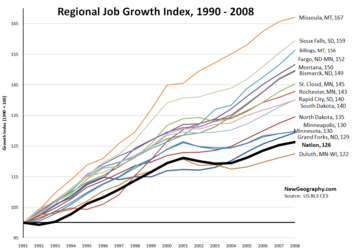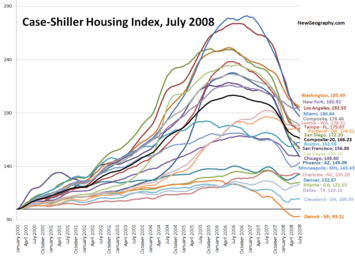After several days in New York, I encountered serious climate change — in terms of atmosphere — at a USA-Canada Summit in Grand Forks, ND. Sure people were concerned about the market meltdown, but the talk was all of new plans for expanding the economy across both sides of the border. The distressed martinis of Manhattan nights were gone in a place where drinks also came with good cheer.
Perhaps most inspiring was an appearance by Senator Byron Dorgan (D-ND) who spoke of the economic crisis but in terms far less hyperbolic than those used by many members of Congress and most of the media. He compared to the current crisis to a low tide that has exposed some weak points in the economy but has not fundamentally altered the underlying strength of what he called “the real economy”.
This includes the manufacturing, farm, energy and business services firms that are flourishing across large parts of the country, particularly in the Heartland. Firms representing these industries at the conference were not whining about competition or the credit crunch, but talking about cooperation across the border and the prospect of a better future.
How refreshing it would be if either of the two major candidates, particularly Senator Obama, the likely winner, spoke with such confidence about the intrinsic strengths of the country and this continent in general. I would not deny the real significance of the stock market crash and the real estate mess, but, as Senator Dorgan suggested, “optimism” about the future has been a primary driver of American progress since the founding.
Let’s hope Senator Obama, or Senator McCain, lose some of their negative rhetoric when they take office. It may be good politics now to be a nay-sayer, but as President, these fellows will need to comprehend the country’s fundamental strengths and how to utilize them to make a strong recovery.














